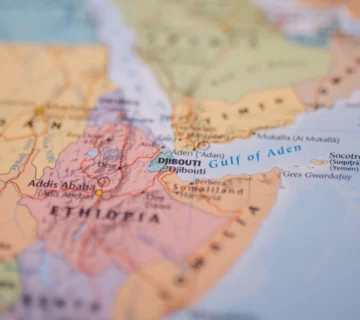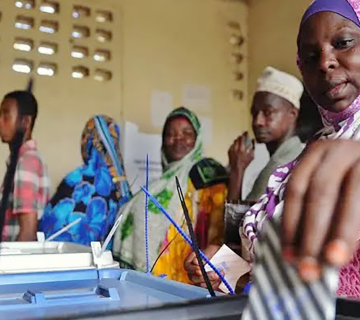The fall of the government in Somalia in 1991 left political and military vacuums in Southern and Central parts of the country. Somaliland, to the North, quickly cut itself from the larger whole. The resultant entropy and anarchy in the South and Central provoked proliferation of militancy in subsequent power struggles as different groups tried to establish central authority in Mogadishu. The closest semblance of such authority came in 2006, with the politico-religious partnership between the Islamic Courts Union (ICU) and the militant group, al Ittihad al Islamiyya (AIAI). The ICU-AIAI alliance was cemented on common pursuit for a sharia-based state and government in Somalia to replace the ‘corrupt’ and ‘illegitimate’ secular governments. Islamic Sharia Law, with projections of ultra-conservative Sunni Salafism, formed the sinew of order for the ICU-led ‘government.’
The ICU-led government gained significant support within Somalia for restoring order and for its religious-based principles of rule. However, due to the inherent extremism and alleged links to al Qaida, the ICU-led government lacked international support and fell to the 2006 invasion and occupation of Mogadishu by American-backed Ethiopian troops. Al Shabab split from the defeated AIAI, condensed and stuck to extremist approaches to recapturing power and maintaining legitimacy in Somalia, while at war with the United Nations-backed Federal Government in Mogadishu.
Entry of AMISOM
With the entry of the African Union Mission in Somalia (AMISOM) in 2007, and sustained military campaigns against al Shabab to date, the group has suffered territory loss of up to 80 per cent, military loss in terms of fighting force, equipment and combat defeats, and lost the financial muscle which helped sustain it. No matter how weak the extremist group is currently, it retains legitimacy and influence in rural areas of Southern and Central Somalia, having been driven out of urban centres. It is from these rural areas that the group is alleged to be regrouping, conscripting from villages, recruiting from regional countries, and planning and launching attacks in the rest of Somalia and in the region.
The group has been carrying out terrorist attacks against civilians in Somalia and regional countries such as Kenya, Uganda and Djibouti, and ambush attacks on AMISOM bases. The most fatal attacks include the 2015 Garissa University attack in Kenya, in which 148 lives were lost, and the December 2017 attack in Mogadishu in which almost 500 lives were lost. In 2016, the group attacked and caused fatalities of between 150 and 250, on Kenyan troops in El Adde. In January 2019, al Shabab launched an ambush attack on Ethiopian troops in which scores of soldiers were killed.
Safeguarding AMISOM Achievements
Thus, to secure military and territorial gains made under AMISOM, an ideological front should be opened against the group, which will uproot al Shabab from its crucial and perhaps its last stronghold, the minds and hearts of sympathizers especially in rural Southern Somalia. This is because, al Shabab wields influence and legitimacy, through the wahhabist ideology which fuses religion and politics or state, to form an ‘Islamic State’ or Caliphate. However, to attract sympathy in Somalia, regionally and internationally, the group embraces ideological tentacles – Islamic nationalism (for domestic audience) and pan-Islamism (for foreign audience), upon which it bases its ‘jihadist war’ or violent extremist campaigns against anti-sympathetic civilians, secular government in Mogadishu and regional countries such as Kenya, Uganda, Djibouti, and Ethiopia. Thus, the Federal Government of Somalia, the governments of Regional Member States of Galmudug, Hirshabelle, Jubaland, and Puntland, AMISOM and Somalia’s international partners in its stabilization and reconstruction, should invest in ideological push back programs to counter, delegitimize and destroy al Shabab’s ideological grip.
Sustained Informational Campaign
Lastly, an informational campaign should be launched against the group to counter and diminish the utility of violence as a policy for the group, among its sympathizers, potential recruits and the general public. Through informational campaigns, the absurdism and unacceptability of persistent indiscriminate violence on innocent civilians and wanton destruction of property, which characterizes al Shabab’s terrorist attacks in Somalia and in the region will be ably exposed, to create popular cognition around violent extremism. This will promote rejection of use of violence for tactical and strategic import among the local population, and limit the utility of violence for al Shabab for fear of losing moral support. With a sustained combined loss of territory, military, finance and ideology, al Shabab’s choices will be limited to negotiating for mainstreaming in Somali politics or disintegrating into less potent factions.
Edmond Pamba is a Research Assistant at the HORN Institute.
Photo Credit: Middle East Monitor



